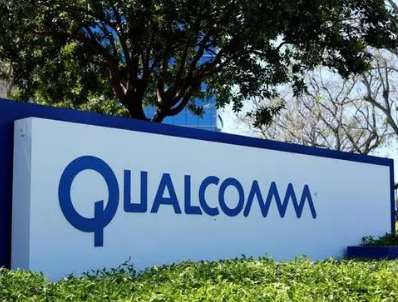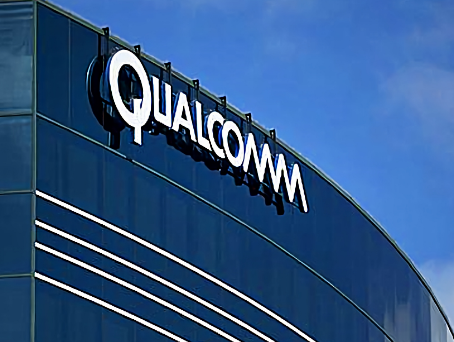Qualcomm Brings AI, Vision Processing to IoT
After surpassing $1 billion in IoT revenue in FY2017, Qualcomm is announcing new product families purpose-built for IoT applications. The company began by announcing a new family of IoT chipsets, the QCS603 and QCS605, along with software and reference designs, all dubbed the Qualcomm Vision Intelligence Platform. The platform brings the image and artificial intelligence (AI) processing capabilities found on its Snapdragon chipsets for premium smartphones to a wide range of consumer and industrial applications.
With the transition from connected devices to intelligent devices, there is a push to bring AI processing from the cloud to the devices we use, commonly referred to as the “edge” or “edge devices” referring to the edge of the network. Bringing AI to the edge reduces cloud and connectivity bandwidth requirements while increasing security and system performance. Vision plus AI processing have become critical elements in autonomous cars and many other applications that require local processing. The new Qualcomm Vision Intelligence Platform seeks to bring similar functionality to applications that are constrained by size, thermal limits, and/or battery life.
The new QCS chipsets and other elements of the platform will leverage the latest technology from Qualcomm. The chipsets will leverage the same kind of AI processing solution in the latest Snapdragon 845 smartphone processors called the Artificial Intelligence Engine (AIE). The AIE takes advantage of the heterogeneous chip architecture that that combines the Kryo 300 CPU cores, Hexagon 685 Vector Processor, and Adreno 615 GPU into a single system-on-chip. In addition, the Vision Intelligence Platform includes an integrated Spectra 270 ISP that supports dual-16 MP image sensors. The platform also includes other image technologies to improve the overall image performance, including staggered HDR, advanced electronic image stabilization, dewarp, de-noise, chromatic aberration correction, and motion compensated temporal filters.
The platform also supports audio functions, including noise and echo cancellation, that can be used for user interface, natural language processing, and speech recognition. This includes support for Qualcomm’s 3D Audio Suite, Aqstic Audio Technologies, and aptX Audio technologies.
The QCS605 includes two gold Kryo CPU cores based on the Arm Cortex-A75 and six silver Kryo CPU cores based on the Arm Cortex-A55. The QCS603 includes two gold Kryo CPU cores and two silver Kryo CPU cores. The chipsets also feature an integrated display processor capable of up to WQHD resolution touch display with hardware accelerated composition, 3D overlays, and support for the major graphics APIs including OpenGL, OpenCL, and Vulkan. For connectivity, the chipsets feature integrated 802.11ac Wi-Fi, Bluetooth 5.1, and GPS. The chipsets are also being produced on leading-edge 10nm process node.
If this all sounds familiar to the industry leading mobile chipset, the Snapdragon 845, it is. Qualcomm claims that the QCS chipset performance is not be the same as its flagship Snapdragon offering, but it is close and optimize for the requirements and cost-effectiveness needed in IoT. The 6xx nomenclature has no relation to the performance levels of the Snapdragon family. The company intends the QCS chipset family to be a separate product line with its own features, performance levels, and nomenclature.
The chipset, however, is only half of the solution. Qualcomm will also be providing the usual evaluation boards and reference designs, in conjunction with software. The software includes a Neural Processing Engine Software Development Kit (SDK) and libraries and tools optimized for the leading AI frameworks, including TensorFlow, Caffe 2, and Open Neural Network Exchange. The platform also supports Android Neural Networks API, Qualcomm’s Hexagon Neural Network library, and several third-party AI image recognition and detection solutions from SenseTime, Pilot.ai, and MM Solutions.
The QCS605 powerhouse is capable of handling dual image streams - a 5.7k stream at 30 fps or 4k stream at 60 fps and a secondary 1080p stream at 60 fps that can be used for data analytics. In terms of AI inference processing, the QCS605 is capable of 2.1 tera-operations per second (TOPS). The QCS603 supports a 4k and 1080p stream at 30 fps. The ISP is also optimized for low light environments.
Qualcomm is targeting the platform for a wide range of applications, including sports, VR, security, and 360-degree cameras; industrial and consumer robots; and smart displays. However, the list of IoT applications that are likely to leverage vision and AI is almost endless. For industrial applications, Qualcomm will also support extended lifecycles. The QCS605 and QCS603 are sampling now. In addition, a QCS605-based VR 360 camera reference design is available from Altek.
The new QCS Vision Intelligence Platform demonstrates how mobile technology continues to drive innovation in other segments and why leadership in mobile technology is critical for any company hoping to compete in the Intelligence of “Things” era.
在线留言询价
- 一周热料
- 紧缺物料秒杀
| 型号 | 品牌 | 询价 |
|---|---|---|
| TL431ACLPR | Texas Instruments | |
| RB751G-40T2R | ROHM Semiconductor | |
| BD71847AMWV-E2 | ROHM Semiconductor | |
| MC33074DR2G | onsemi | |
| CDZVT2R20B | ROHM Semiconductor |
| 型号 | 品牌 | 抢购 |
|---|---|---|
| STM32F429IGT6 | STMicroelectronics | |
| BP3621 | ROHM Semiconductor | |
| BU33JA2MNVX-CTL | ROHM Semiconductor | |
| ESR03EZPJ151 | ROHM Semiconductor | |
| IPZ40N04S5L4R8ATMA1 | Infineon Technologies | |
| TPS63050YFFR | Texas Instruments |
- 周排行榜
- 月排行榜
AMEYA360公众号二维码
识别二维码,即可关注



























